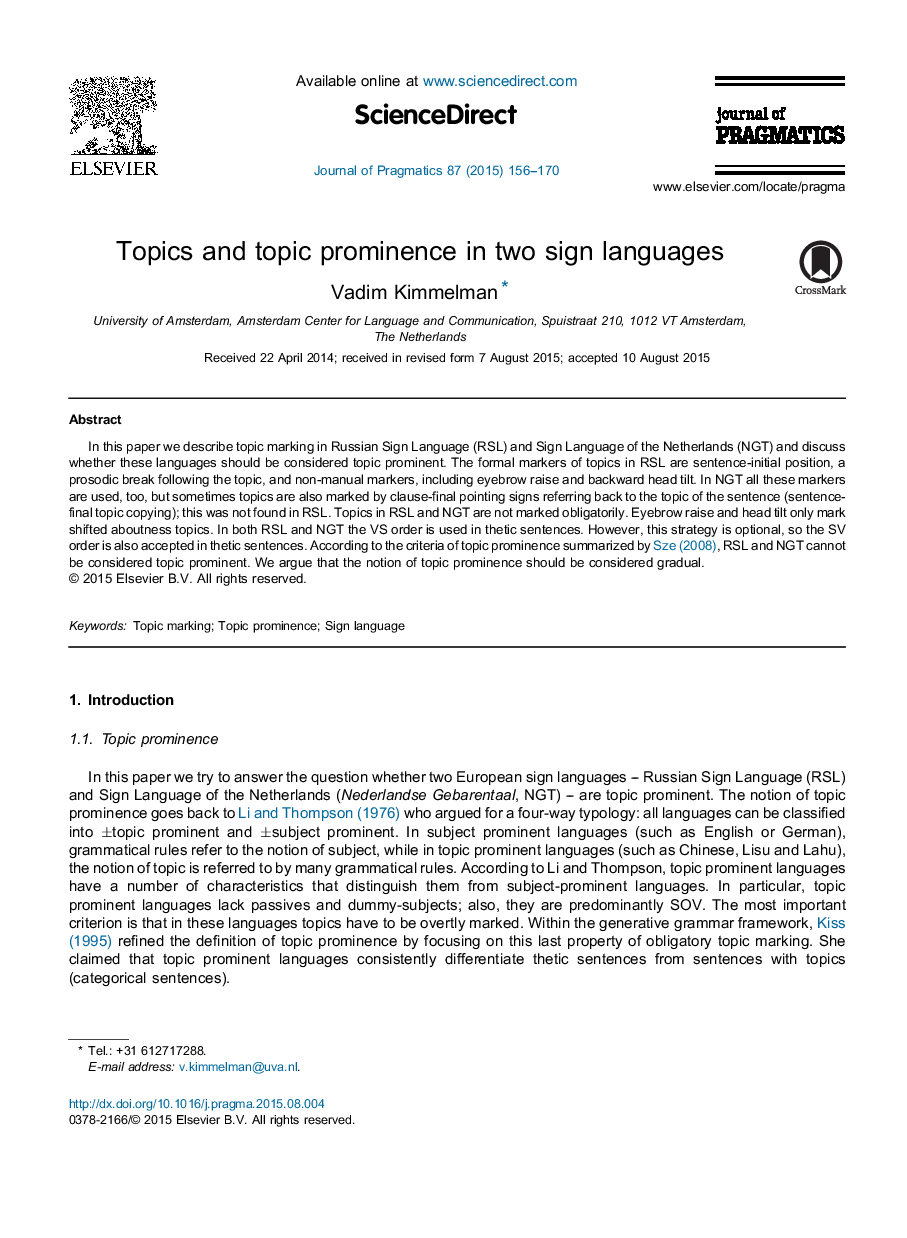| Article ID | Journal | Published Year | Pages | File Type |
|---|---|---|---|---|
| 932523 | Journal of Pragmatics | 2015 | 15 Pages |
•We analyzed topics in two sign languages based on corpus data.•Topics can be marked syntactically and prosodically (including non-manual markers).•Topic marking and marking of thetic sentences is optional.•The languages cannot be considered topic prominent.
In this paper we describe topic marking in Russian Sign Language (RSL) and Sign Language of the Netherlands (NGT) and discuss whether these languages should be considered topic prominent. The formal markers of topics in RSL are sentence-initial position, a prosodic break following the topic, and non-manual markers, including eyebrow raise and backward head tilt. In NGT all these markers are used, too, but sometimes topics are also marked by clause-final pointing signs referring back to the topic of the sentence (sentence-final topic copying); this was not found in RSL. Topics in RSL and NGT are not marked obligatorily. Eyebrow raise and head tilt only mark shifted aboutness topics. In both RSL and NGT the VS order is used in thetic sentences. However, this strategy is optional, so the SV order is also accepted in thetic sentences. According to the criteria of topic prominence summarized by Sze (2008), RSL and NGT cannot be considered topic prominent. We argue that the notion of topic prominence should be considered gradual.
